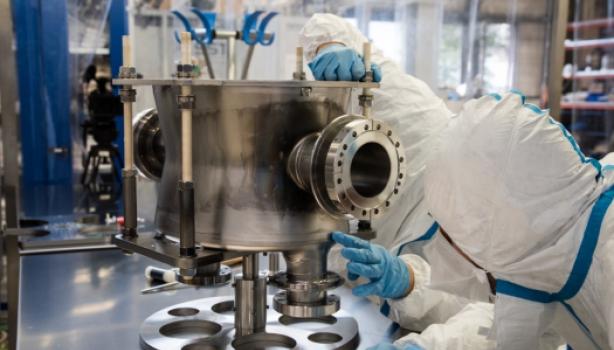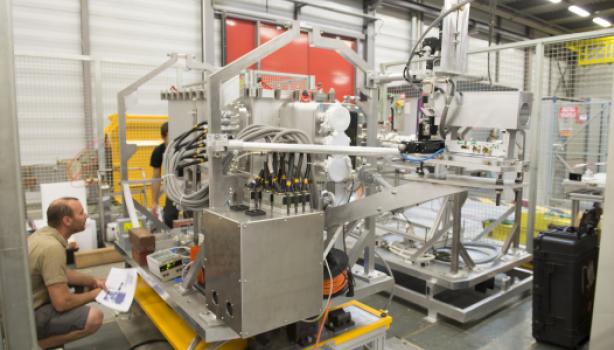What if accelerators could be more compact and more cost-effective? It would make their use in research, industry and medicine more affordable and more accessible. This is where the CompactLight project steps in. This new European project, which kicked off on 25 January at CERN, aims to use advanced linear-accelerator (linac) technology, developed at CERN and elsewhere, to develop a new generation of compact X-ray free-electron lasers (XFELs).
XFELs work by accelerating electrons at almost the speed of light before sending them through “undulators”, which are an array of magnets producing alternating magnetic fields. These fields deflect the electrons back and forth to produce high-intensity X-ray beams of unprecedented brilliance and quality. These X-ray beams provide novel ways to probe matter and allows researchers to make “movies” of ultrafast biological processes. The demand for such high-quality X-rays is large, as the field still has great and largely unexplored potential for science and innovation – potential that can be unlocked if the linacs that drive the X-ray generation can be made smaller and cheaper.
By using a technology known as “X-band”, linacs can accelerate electrons with higher accelerating-gradients, resulting in shorter accelerating cavities and hence a more compact machine. X-band technology is the result of years of intense research and development at SLAC in the US, KEK in Japan and at CERN in the context of the Compact Linear Collider (CLIC) project.
The latest developments in high-quality beam sources, as well as innovative undulators are also part of the recipe for achieving a significant reduction in facility cost. Compared with existing XFELs, the proposed facility can have a lower electron-beam energy (due to the enhanced undulator performance), so can be more compact (with both lower energy and a higher accelerating-gradient) and have lower electrical power demand.
Success for CompactLight will have a much wider impact: not just establishing X-band technology as a new option for accelerator-based facilities, but integrating advanced undulators to the next generation of compact photon sources. This can help the wider spread of a new generation of compact X-band-based accelerators and light sources, with a large range of applications including medical use, and enable the development of compact cost-effective X-ray facilities at national or even university level across and beyond Europe.
The three-year CompactLight project, funded by the European Commission’s Horizon 2020 programme, brings together a consortium of 21 leading European institutions, including Elettra, CERN, PSI, KIT and INFN, in addition to seven universities and two industry partners (Kyma and VDL). The CompactLight kick off took place during the 2018 CLIC workshop, held at CERN.
This article originally appeared on the CERN homepage.
Header image: A CLIC X-band prototype structure built by PSI using Swiss FEL technology. (Image credit: M Volpi)


